I don’t much envy Crowsnest Ridge. Sitting low in the shadow of Sentry Mountain in the South and Mt Tecumseh in the North, Crowsnest Ridge isn’t at the top of anyones hiking to-do list. More often than not it’s forgotten about entirely and is relegated to just another lowly peak driven past on the way to bigger and better summits. And maybe that’s not completely wrong – it’s true that the trail is not very interesting most of the way, with the rewarding views only coming near the end. The views at the end are fantastic though.
The trail starts up at a fairly gradual incline through field and forest. Though the trailhead is in BC the hike soon takes you into Alberta as you climb into the little valley between Crowsnest Ridge and Mt Tecumseh. From here up it follows a service road for the telecom tower on the summit – switchbacking up the backside of the ridge. From here views of the valley open up and the hike starts to become worth it. Once the trail makes it up to the ridge crest though and views open up down into the Crowsnest Pass, the hike really becomes worth it. From there it’s just a short grind up to the finish line.
Continue reading this blog post for everything you need to know to experience the Crowsnest Ridge hike in the Crowsnest Pass for yourself, including distance, elevation gain, how to get there, the best time to visit, and lots of photos of my experience.

When hiking it’s important to avoid harmful practices such as disturbing plants or rock-stacking, or removing any natural object from flowers to rocks, as it’s important to leave the environment as natural as possible for the animals and for fellow hikers to enjoy in perpetuity. As many flowers as there are, there are few enough that if we all took one, then there wouldn’t be any left. Take only photos, leave only footprints.
If you haven’t heard of Leave No Trace principles, they’re also really essential to read up on before heading anywhere into the outdoors in general. Following these important principles basically means doing your best to leave beautiful places like Crowsnest Ridge as good (if not better) than you found them, both for their preservation and for the enjoyment of other visitors.
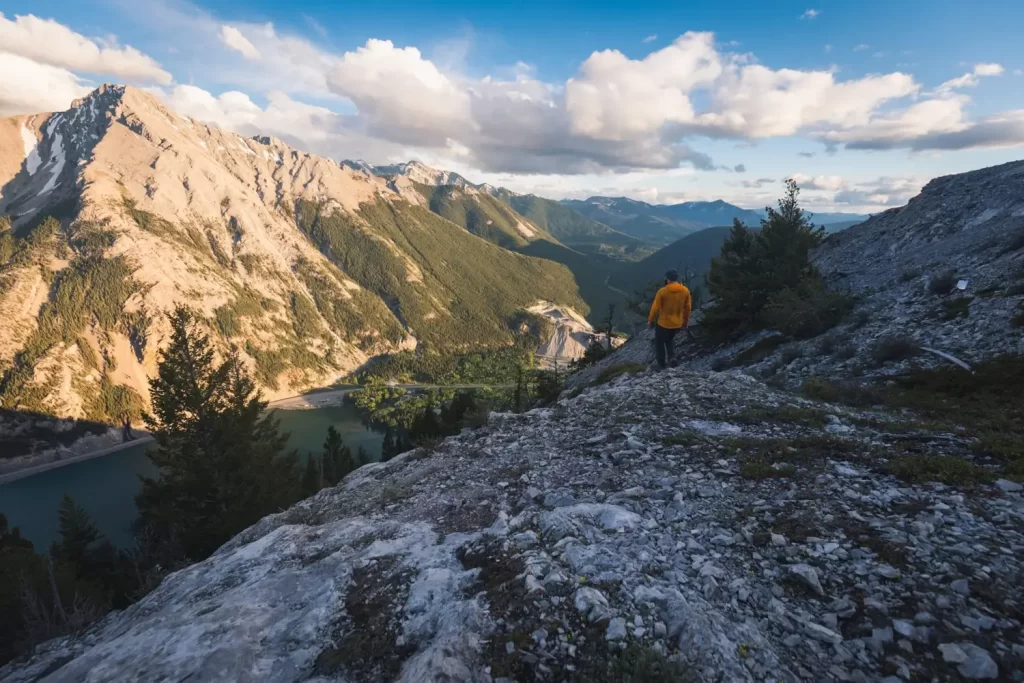
Crowsnest Ridge Round Trip Details
Distance: 13.1 KM / 8.1 MI
Elevation Gain: 564 M / 1850 FT
Hiking Time: 3.5 HRS
Hiking & Safety Tips
- Prepare for the possibility of wildlife encounters. Bear spray is a must whenever travelling in bear country, as well as learning how to use it. Though your chance of an aggressive bear encounter is low, it is always better to be prepared with bear spray. Bear bells are proven to be an ineffective bear deterrent, and are actively discouraged by Parks Canada. The best way to let bears know you’re around is simply to use your voice. Make sure to keep a respectful distance from wildlife and never feed the animals. It may seem kind but it doesn’t just kill wildlife and put people in danger, it’s also in many cases illegal.
- Research current trail conditions and make sure you are well-informed about the route before you leave, and assess if it is within your capability. Be aware of what time it gets dark and check the weather forecast. Make sure to tell someone where you’re going and when you expect to return. Every year as more and more people try hiking for the first time, the number of rescues goes up. Being prepared is the best defense.
- Pack everything you need for a successful hike, including enough water and energy-rich snacks. Remember to pack out everything you pack in though – don’t expect to find a convenient garbage can halfway up the trail. Bring appropriate layers (remember you’ll warm up once you start hiking) and sun protection. Hiking poles may be helpful but are not required. In addition to not leaving any garbage on the trail yourself, I highly recommend bringing a garbage bag and collecting any trash that you do see on the trail. You’re guaranteed to make the hike up Crowsnest Ridge a more enjoyable experience for the next person.
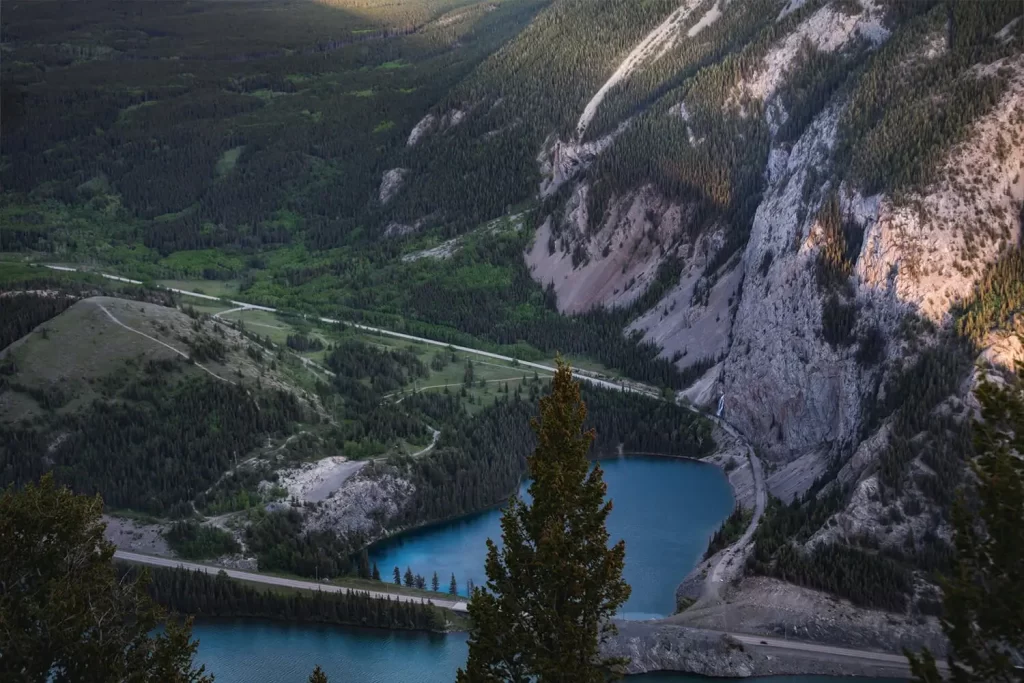
How to Get to Crowsnest Ridge Trailhead
The trail for Crowsnest Ridge begins at the Crowsnest Rest Area, located just a minute West of the Alberta / BC border on the Crowsnest Highway. If driving from the East you’ll drive past the large pullout at Crowsnest Lake and be able to see Crowsnest Ridge above. From here the road curves North briefly and crosses the border. Keep an eye out because as the road curves back West the pull-off for the rest area is immediately after. I’ve accidentally driven past it more than once. If driving from BC the rest area is much better signed and a lot harder to miss.
Click here to open the exact trailhead location in Google Maps.
Hiking Crowsnest Ridge
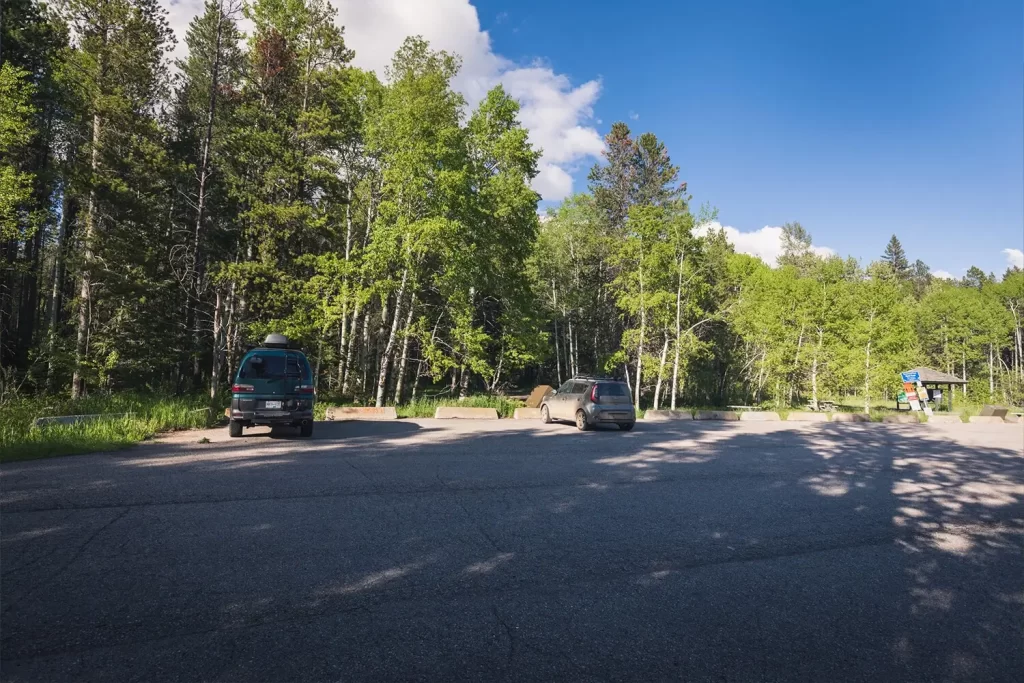
Crowsnest Rest Area parking lot. The trail starts to the left.
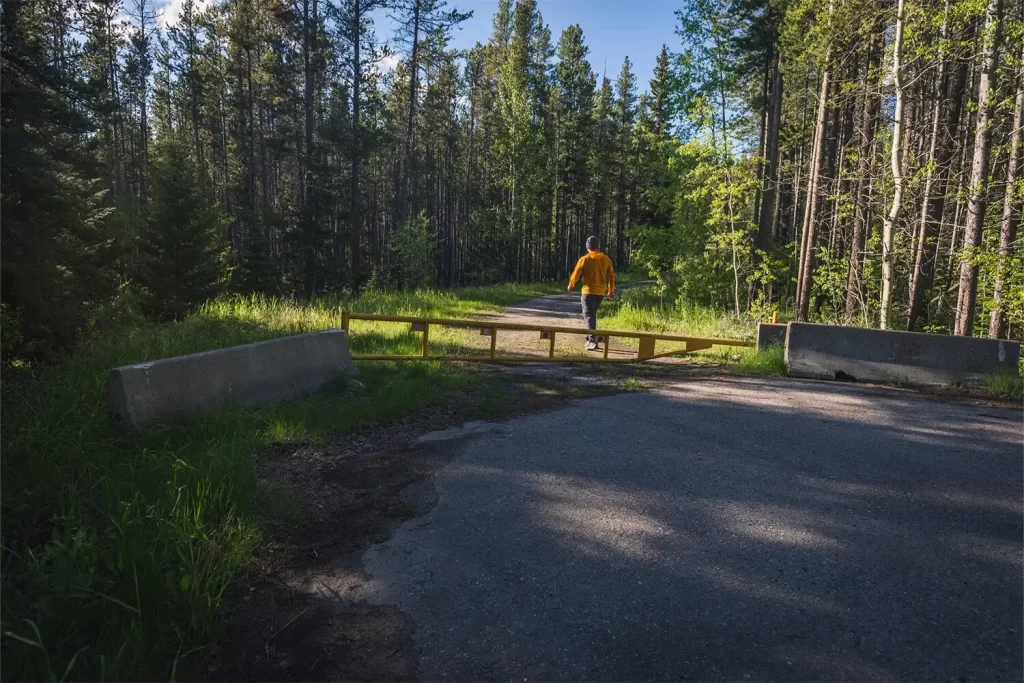
Crowsnest Ridge trailhead.
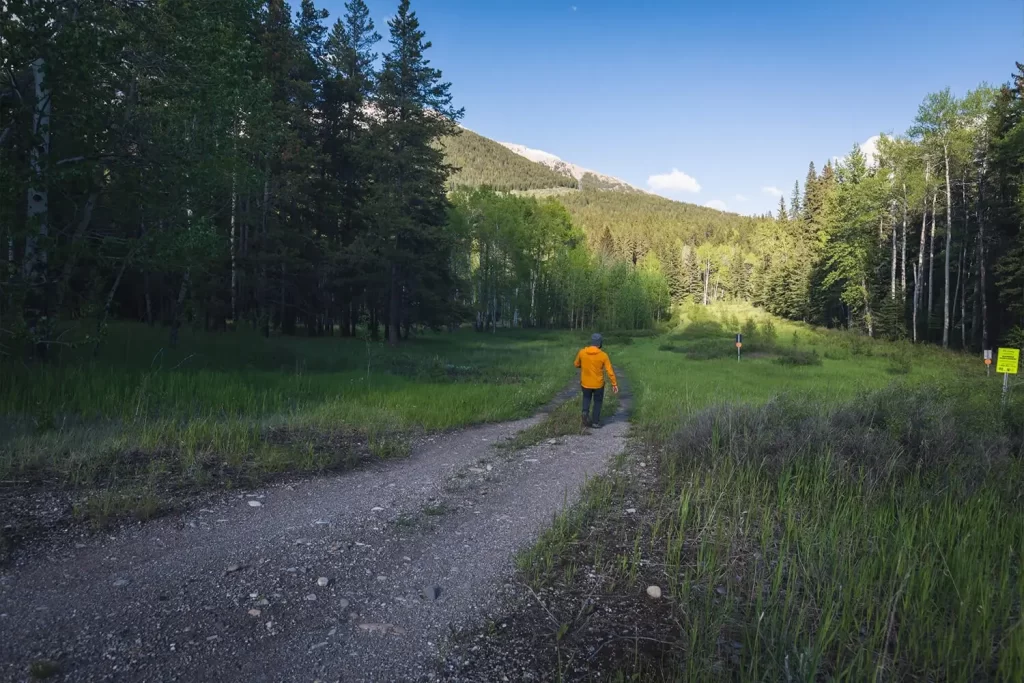
Mt Tecumseh somewhat seen to the left.
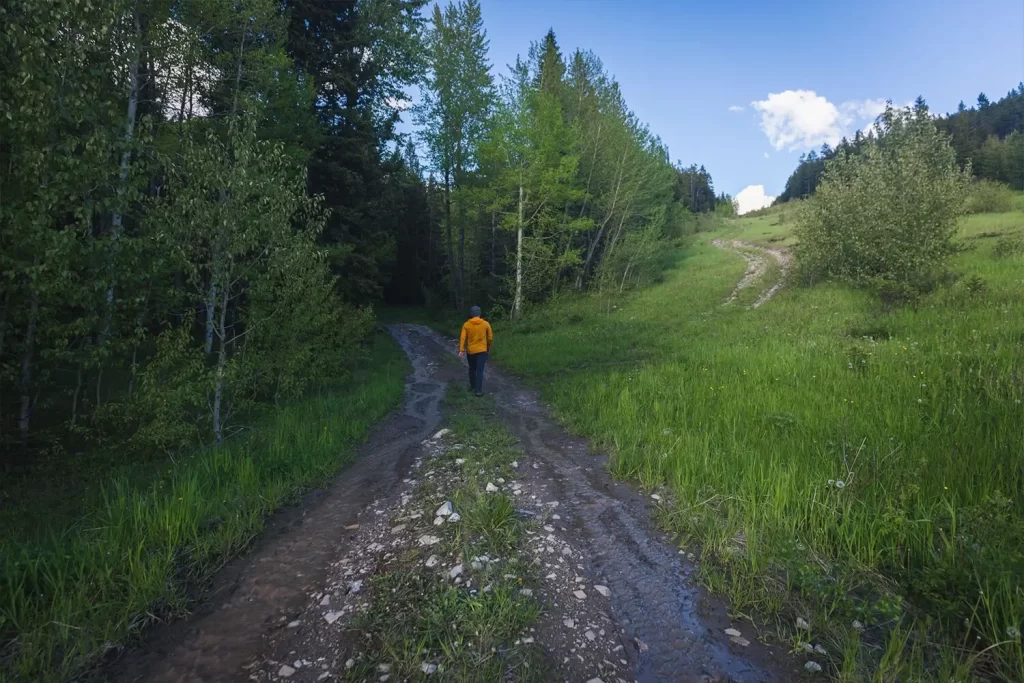
There are a couple criss-crossing trails all leading in the same direction but it’s easy to tell which is the main trail.
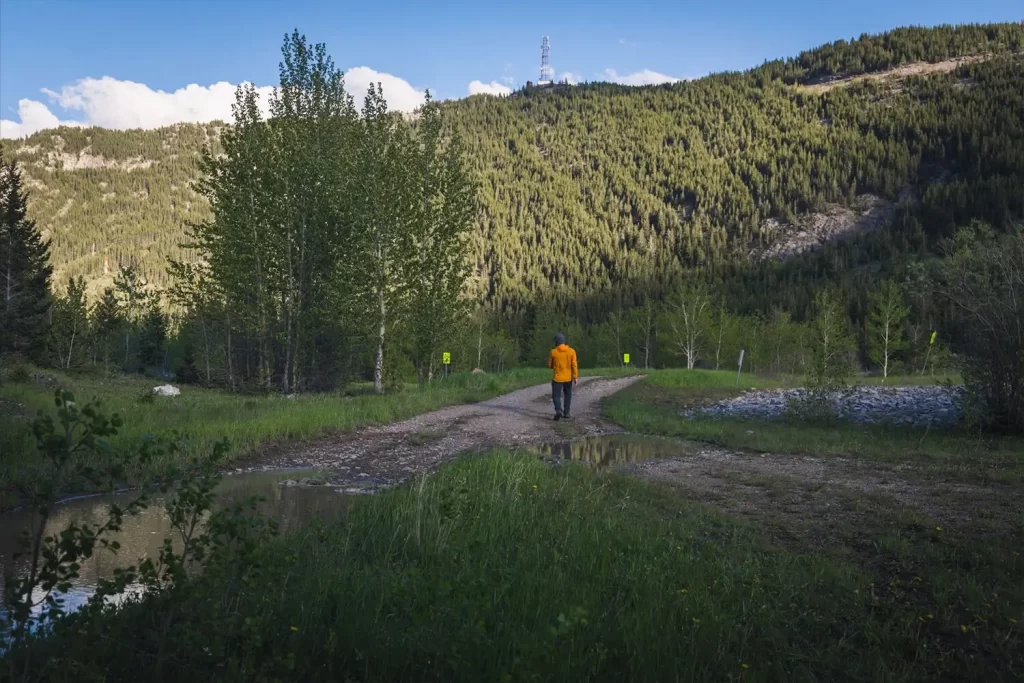
Island Ridge in view with the telecom tower at its summit.
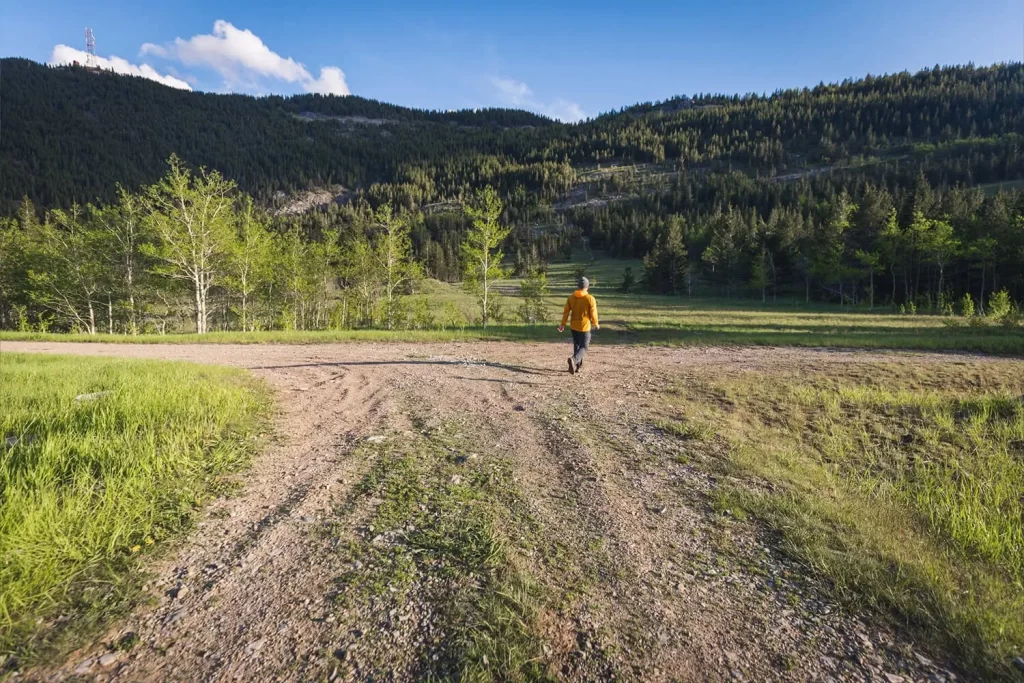
To the left is a fifteen minute out and back detour to Phillipps Lake. I followed the trail to the right up the back of Crowsnest Ridge. A minor shortcut straight ahead is also an option that reconnects after five minutes.
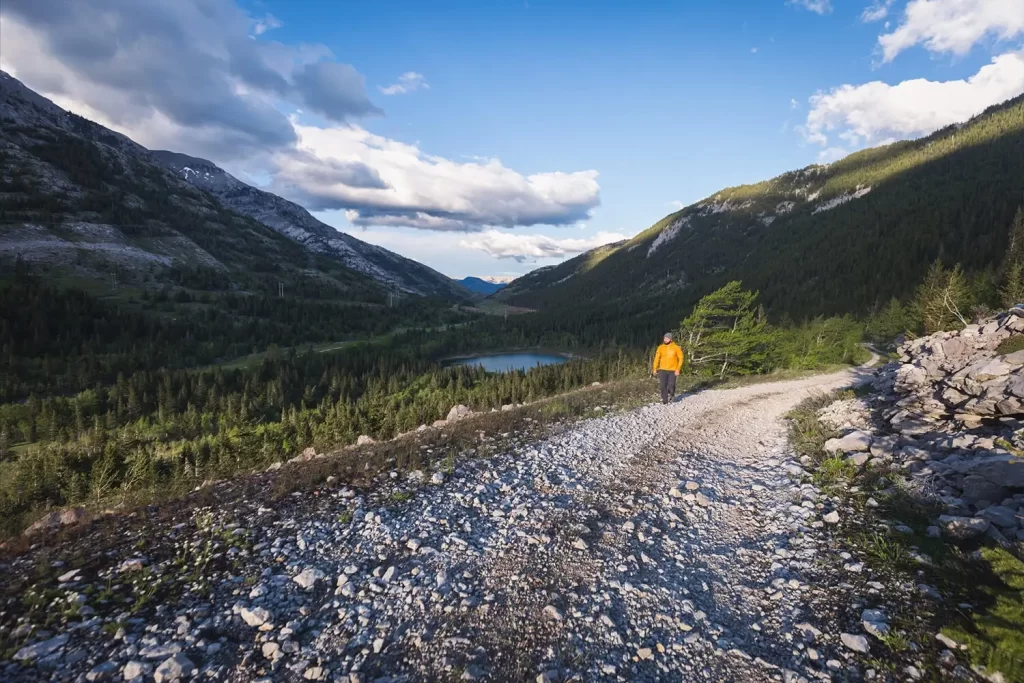
Switchbacking up the ridge. Phillipps Lake see in the valley below.
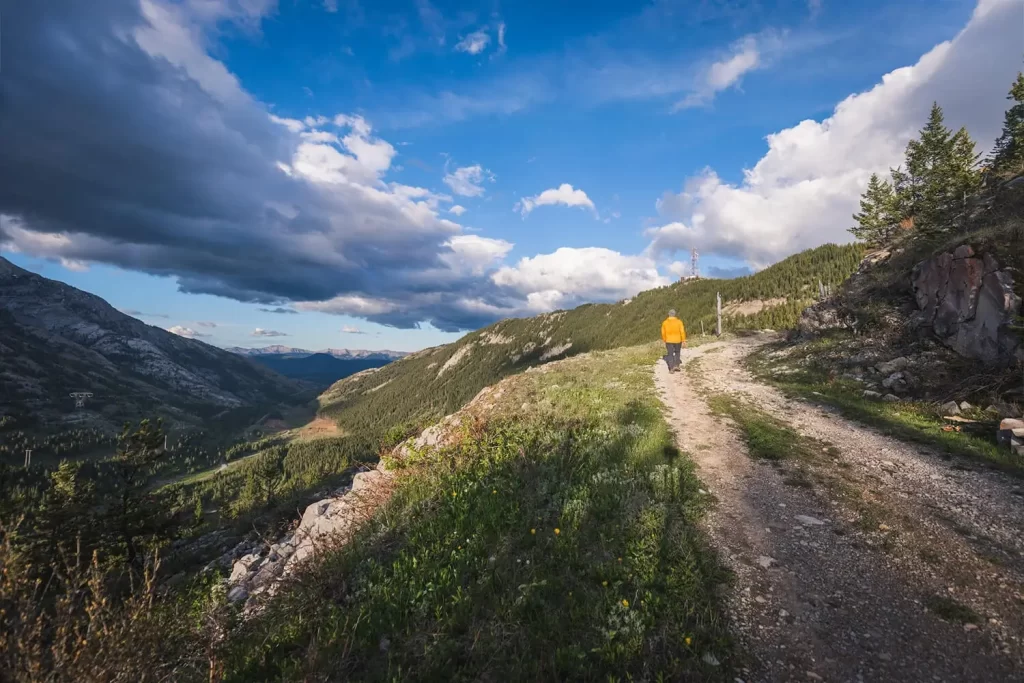
Views here are fantastic.
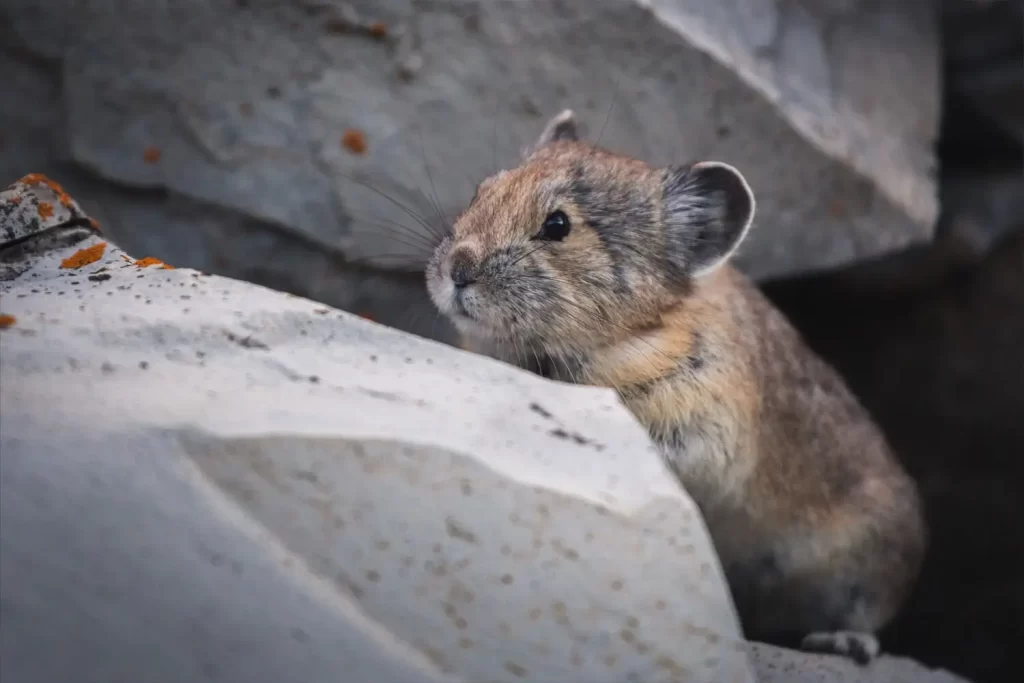
There are tons of pikas living in the rocks. This little gentleman squeaked at me from the side of the path.
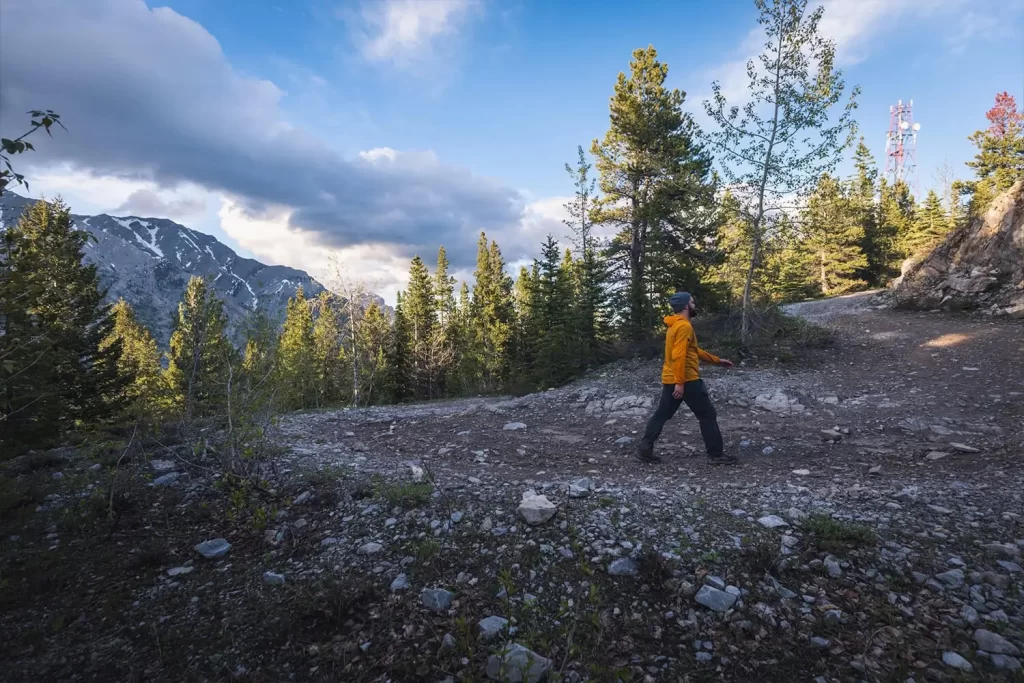
The final push to the summit.
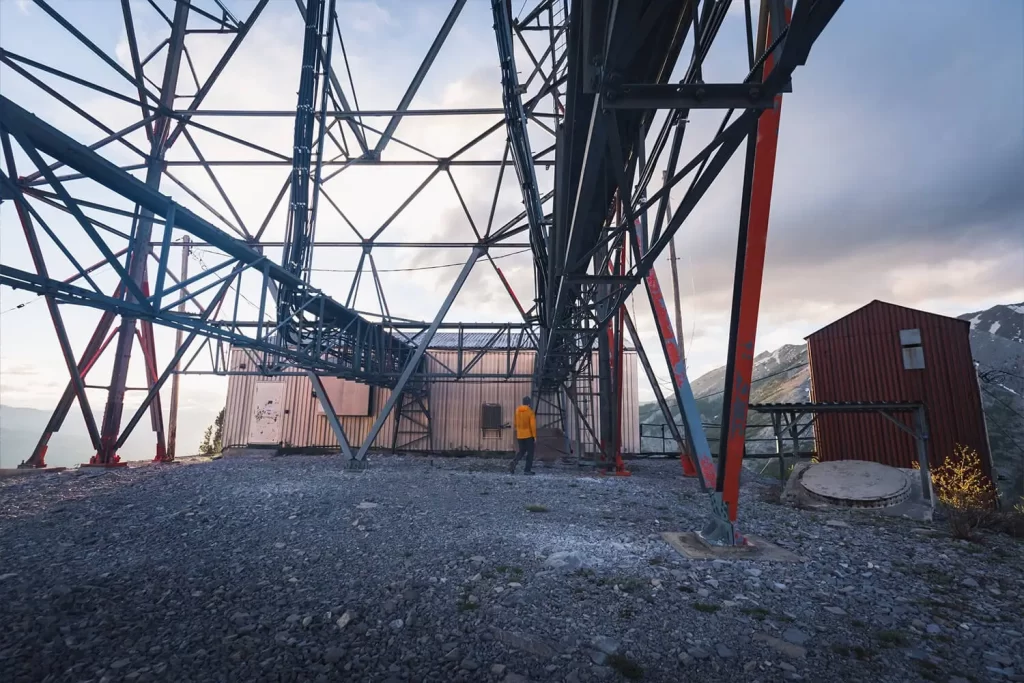
On top of Crowsnest Ridge. The red building is the top of a former lift system.
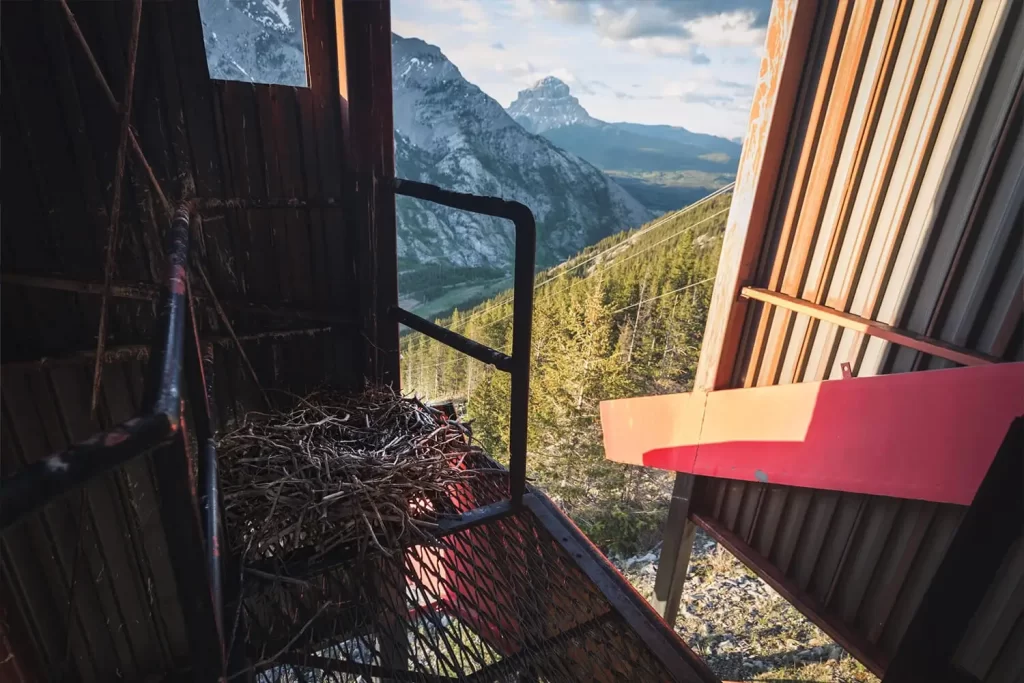
Clearly someone’s taken up residence here.

Views down over Emerald Lake at the base of Sentry Mountain. Lower Sentry Cave Falls visible just behind it. Bald Hill at left.
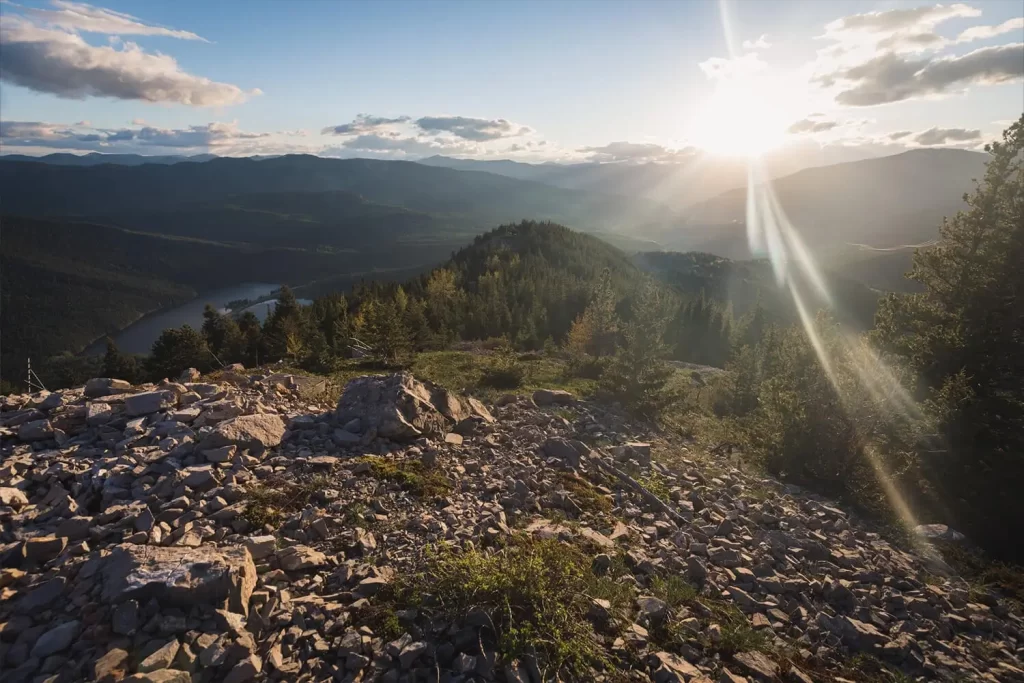
Views to the West looking along Crowsnest Ridge. Mt Erickson at far right.
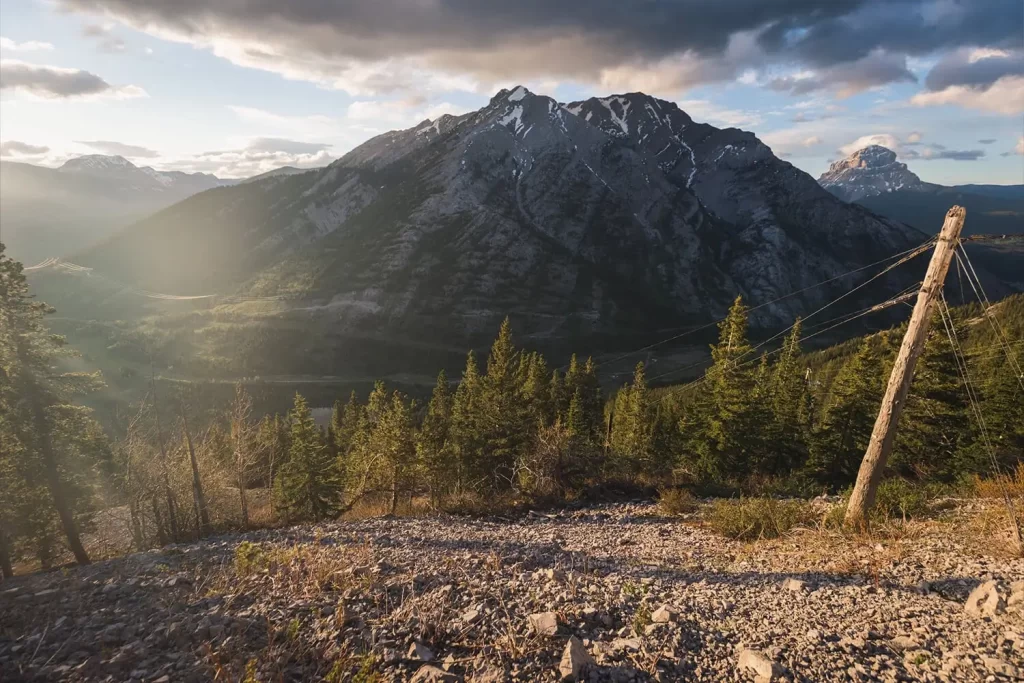
Views North of Phillipps Peak and Mt Tecumseh. Crowsnest Mountain in the distance.
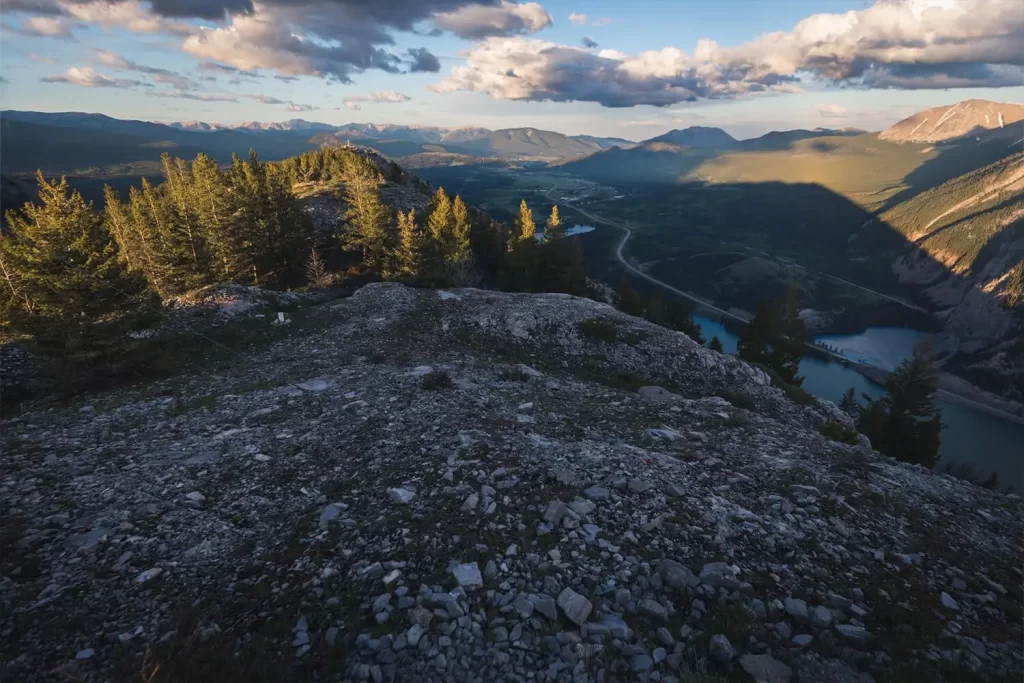
Looking East. Bluff Mountain in center distance. Turtle Mountain on its right.
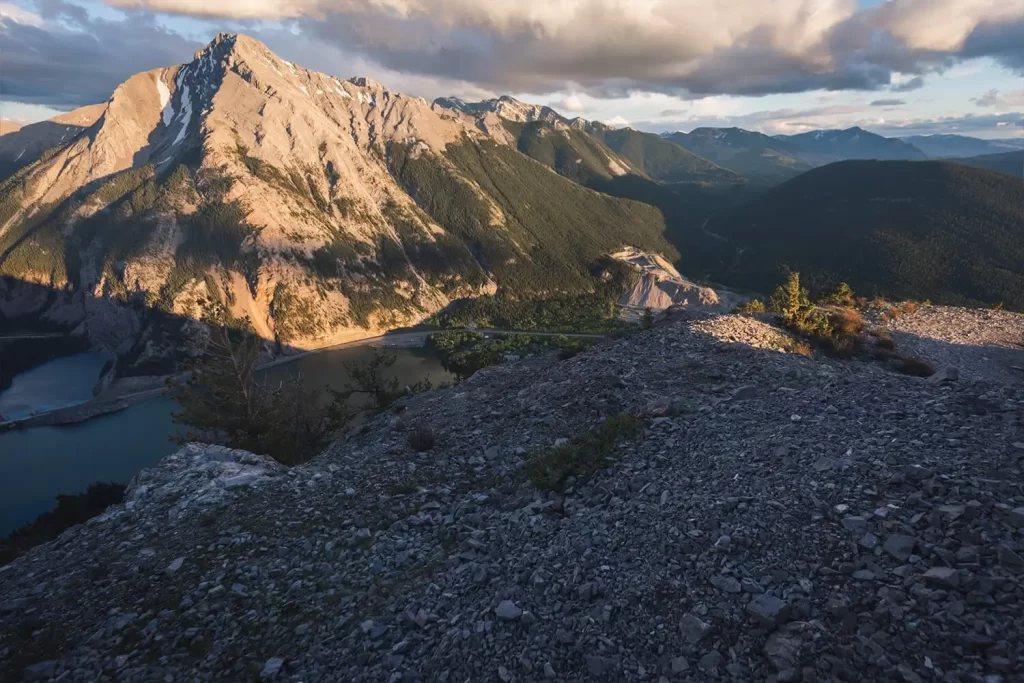
Views South of Sentry Mountain on left. Island Ridge is the forested bump on right.
Recommended Hiking Gear



Water is a must whenever I’m hiking, especially if the sun is going to be out. My favourite water filter I’ve used is the Katadyn BeFree 0.6L, which unlike other water filters I’ve used packs up really small and lightweight. For hikes where I know there won’t be any readily available water sources along the way, I make sure to bring my own. The Hydrapak Stow 1L bottle is my go-to, for the same reason that it’s made of a soft plastic that folds up and doesn’t take up any more extra space than necessary in my pack. Finally, Aquatabs are another great option for purifying water, with one tablet being suitable for one litre of water. I previously used the Grayl water filter while travelling internationally, and though I found its hard body more convenient for day to day use and easier to drink from, it has a little too much bulk for my fast-and-light style of hiking.



The secret to all my photos of gorgeous sunset and sunrise mountaintop views? A lot of hiking in the dark. And let me speak from personal experience when I say that the last thing that you want to happen when hiking is to be caught in the dark without a headlamp. I used the Black Diamond Spot 400 for years and it worked great – until I lost it on top of a mountain somewhere. The only downside to it was having to worry about the batteries dying, though there’s also a slightly more expensive version that has a rechargeable battery. Nowadays I’m using the Petzl Actik Core, which is a bit pricier than the more budget-friendly Black Diamond, but is also brighter, more comfortable (in my opinion), and has a hybrid power system that is rechargeable but can also take AAA batteries if needed.
You won’t see me using trekking poles on shorter hikes often – but on long hikes and backpacking trips, as well as certain scrambles, they are an absolute lifesaver. I’ve invested in a high quality ultra-lightweight pair of MSR DynaLock Ascent carbon poles which, while pricey, I don’t regret one bit. If you’re not entirely sure how much use you’re going to get out of a pair of trekking poles, the best budget-friendly option would be the Trekology Trek Z 2.0. Amazon does sell a lot of cheaper Made in China-style trekking poles for cheaper, but these usually are much much heavier and not worth buying.
All the best and most long-lasting cables and power banks I’ve ever owned have been Anker. I once had a phone cable from them that lasted me over three years of daily use! That’s why I keep an Anker PowerCore Essential 20K power bank on me. Like many people I use my phone for a lot of stuff when hiking (checking in with family, using online maps, taking photos, flying my drone) so I like to be prepared for that low battery warning by having a backup power source on me just in case.



The only socks I ever buy for myself are from Darn Tough, and I almost always make sure to wear them when hiking. After years of having no problems only wearing these comfortable and rugged socks for hikes, I accidentally wore a pair of no-name socks on a hike last year and ended up with blisters on both feet. Safe to say I’m back to sticking with the Darn Tough. And the best part? They have a lifetime guarantee, meaning that if they ever wear out you can send them back for a brand new pair. For hiking footwear I go between a pair of lightweight approach shoes for quick and dirty mountain ascents or anything involving scrambling and more heavy-duty boots for longer treks. I’ve worn a couple different versions of the lightweight but super durable Arc’teryx Konseal FL 2 approach shoes for a few years now and am very impressed with the durability. I also really like the thick toecap that keeps me protected every time I stumble into a root or large rock. For longer, tougher, or muddier treks I rely on my LOWA Camino EVO GTX, which I find insanely comfortable and made of very high quality.



I wear my Ar’teryx Gamma Lightweight Pants on every single hike I go on, and on many days when I’m not hiking. After several years of abuse they are still holding together extraordinarily well, with only a few small holes from where I’ve fallen down and some slight stains from being repeatedly coated with mud. They’re lightweight, breathable, and super comfortable. For lightweight and breathable hiking tops I’m a big fan of both the Patagonia Capilene Shirt and the MEC Core Shirt. My Arc’teryx Squamish Hoody shows up in a lot of my photos. It’s super lightweight and packable, and does a great job of cutting the wind while also being pretty breathable. I also have an Arc’teryx Atom Hoody and Arc’teryx Beta LT that I pull out for cooler or wetter conditions.
I hope you enjoyed this guide to hiking Crowsnest Ridge in the Crowsnest Pass! Feel free to leave any questions in the comment section below or to contact me directly via social media.

Hi Quincy,
Your blog and photos are great. And the link to the bear advice was perfect for me.
Your dad suggested you might be able to help me with some planning for activities prior to the start of the Tour Divide which starts 9 June in Banff.
In summary I arrive in Vancouver on Wednesday afternoon (31 May) and leave by train Friday afternoon (2 June) to Jasper.
It looks like you could recommend a days walking, camping and doing tourist things in this gap. My only constraint is my bike will be in a box which I could probably leave at the train station (or airport).
Once in Jasper (3 June) I plan to set my bike up and ride the Icefields Parkway to Lake Louise and then onto Banff. This is about 230km biking which is 2 days relaxed riding over 3.5 days as have a reservation in Banff from June 6 (which can be changed).
On my first night out of Jasper (3 June) I am keen to camp in a recognised campground and learn some bear essentials from the ranger/ other campers.
It looks like you know the area well and could suggest an itinerary/list of sidewalks for Jasper to Banff and then maybe something around Banff on 7/8 June. I better made 8 June a resting day.
I appreciate any advice you can give me and I look forward to meeting your dad on the start line (if not before).
Kind Regards
Tim Allan
+64 21465000